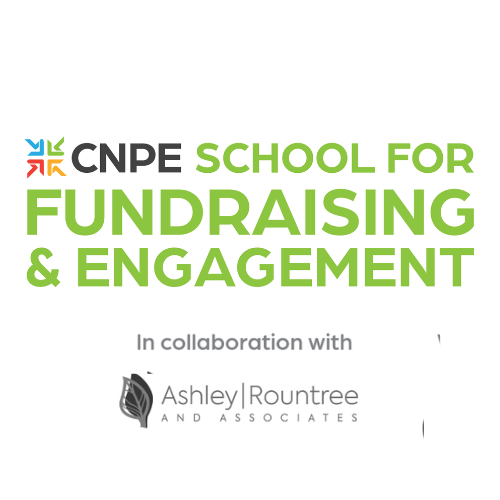The Function of Neighborhood Engagement in Nonprofit Fundraising: Structure Lasting Relationships for Sustainable Support
Neighborhood involvement is increasingly recognized as a crucial part of effective nonprofit fundraising. The techniques and techniques employed to engage communities vary extensively, increasing vital questions concerning effectiveness and impact.
Comprehending Community Interaction
Area interaction is an important element of successful nonprofit fundraising efforts. It refers to the methods and activities that organizations employ to link with their neighborhood communities, promoting connections that are mutually valuable. Comprehending neighborhood engagement entails recognizing its diverse nature, which includes cooperation, outreach, and involvement. Nonprofits must recognize key stakeholders-- such as neighborhood participants, local companies, and other organizations-- to create reliable interaction techniques.
Effective community engagement is based on energetic listening and responsiveness to the needs and interests of the community. This process includes getting comments, recognizing community characteristics, and guaranteeing that the organization's goal straightens with local concerns. Involving the neighborhood can take different kinds, including public conferences, volunteer opportunities, and collaboration campaigns, each made to urge involvement and financial investment in the organization's goals.
Moreover, community engagement must be come close to as a recurring dialogue instead of an one-time effort. By promoting an inclusive atmosphere where area voices are listened to and valued, nonprofits can construct a strong foundation for future fundraising ventures. Ultimately, a deep understanding of area engagement empowers companies to create genuine links that improve their general efficiency and sustainability.
Benefits of Strong Relationships
Strong partnerships created via area involvement yield many benefits for nonprofit fundraising initiatives. First and leading, these partnerships foster trust fund and reputation, vital elements in encouraging donors to contribute. When prospective supporters see a not-for-profit actively associated with their area, they are more probable to count on its mission and effect.

Moreover, these relationships promote reliable communication. Nonprofits can take advantage of their connections to share stories of effect, updates, and requires, making certain that fans remain enlightened and involved. This open line of interaction not just reinforces bonds but additionally urges referral promotion, increasing the not-for-profit's reach.
Last but not least, strong community ties can bring in brand-new partners and sponsors. Companies and individuals are much more likely to straighten with organizations that show meaningful community involvement, providing added sources and assistance that can significantly enhance fundraising capabilities. Thus, cultivating robust relationships via neighborhood engagement is important to a nonprofit's long-lasting fundraising success.
Strategies for Effective Interaction
How can nonprofits effectively involve their communities to enhance fundraising initiatives? Routine updates, engaging material, and calls-to-action can galvanize neighborhood passion and engagement.
2nd, hosting area occasions, such as workshops, volunteer chances, or fundraising drives, helps with in person interaction, allowing nonprofits to display their impact and efforts. These occasions not only increase funds but also cultivate partnerships and enable neighborhood members to involve straight with the reason.
Third, executing customized communication methods Resources can improve involvement. Tailoring messages to certain donor sectors based on interests and previous contributions promotes a feeling of belonging and financial investment in the organization's objective.
Finally, producing collaborations with neighborhood companies and community leaders can enhance outreach efforts. Collaborative efforts can enhance exposure and reputation, demonstrating a collective commitment to the community's well-being. By integrating these approaches, nonprofits can develop lasting relationships that boost fundraising efforts and drive sustainable assistance.
Gauging Involvement Success
While involving the area is crucial for effective nonprofit fundraising, gauging the performance of these involvement initiatives is equally crucial. Developing clear metrics allows organizations to assess how well they are getting in touch with their target market and accomplishing their fundraising goals. Secret performance signs (KPIs) such as donor retention rates, volunteer involvement levels, and involvement on social media sites platforms give tangible information for examination.

Regularly evaluating these metrics makes it possible for organizations to pivot their strategies when essential, making sure that neighborhood interaction remains straightened with their general goal. Additionally, sharing these results with stakeholders cultivates openness and builds count on, motivating further neighborhood involvement. Eventually, a durable measurement framework not just educates future fundraising initiatives but also strengthens the you can check here relationship between the nonprofit and its fans, laying the groundwork for sustainable success.
Study in Neighborhood Influence
Many study show the extensive impact that area interaction can have on not-for-profit fundraising success. One noteworthy instance is the "Food for Thought" initiative, where a regional food bank partnered with schools and businesses to host area dinners. These events not only raised funds however also promoted a sense of belonging among individuals, substantially increasing benefactor retention prices.
An additional compelling situation is the "Green Spaces Job," which involved neighborhood residents in the revitalization of urban parks. This effort not just garnered financial assistance from regional services however likewise grew a volunteer base that added to continuous upkeep and programs. The feeling of possession and pride among neighborhood members equated into sustained payments.
In the world of arts, the "Art for All" campaign successfully engaged local artists and patrons to create collaborative art installments, causing boosted visibility and contributions for a local arts not-for-profit.
These instances highlight that when nonprofits prioritize neighborhood participation, they can develop enduring relationships that enhance fundraising efforts, making sure lasting support and promoting a dynamic community culture. Such cases demonstrate that community engagement is not merely an approach yet an essential pillar of not-for-profit success.
Conclusion
In final thought, area involvement is important to the success of not-for-profit fundraising initiatives. By promoting strong partnerships with regional stakeholders, companies boost count on and reputation, causing boosted benefactor retention and loyalty. Executing efficient engagement methods and gauging their effect guarantees that nonprofits can grow and adjust. Eventually, a robust structure of area support not only amplifies fundraising possible yet additionally cultivates a society of partnership, crucial for attaining lasting organizational objectives and sustaining purposeful impact.
Nonprofits should determine website here essential stakeholders-- such as area participants, neighborhood organizations, and various other organizations-- to produce effective involvement approaches.

In conclusion, community interaction is essential to the success of nonprofit fundraising initiatives.